Perhaps one of the most familiar, cherished aspects of the Seder night and the Exodus narrative in general is the topic of the Esser Makkos, the Ten Plagues that Hashem visited upon the Egyptians. But as the Ramchal famously states in the introduction to his classic work Mesilas Yesharim: “Together with universal familiarity… comes also a lack of scrutiny and deep understanding” [paraphrased]. While so many of us are able to rattle off the Plagues in our sleep, there is still a tremendous amount of depth to the subject that often escapes our notice.
As the bulk of the plagues are contained in this week’s parshah, we take this opportunity to focus on a particular facet of this topic that may not be so well known. Generally, we tend to view the plagues as stand-alone entities, each one representing another fascinating and dramatic way in which the evil ones were smitten. Actually, the commentators elucidate the subject, demonstrating the organization and interrelationship that existed among the makkos.
One example emerges from the Haggadah’s treatment of the Torah passage we are bidden to expound upon on Pesach night. As recorded in the Mishnah (Pesachim 10:4):
דוֹרֵשׁ מֵאֲרַמִּי אוֹבֵד אָבִי, עַד שֶׁיִּגְמוֹר כָּל הַפָּרָשָׁה כֻלָּהּ.
“One explains (the section beginning with the verse), ‘The Aramean (Lavan) sought the destruction of my forefather (Ya’akov),’ until he completes the entire passage.”
The reference, of course, is to the section contained in parshas Ki Savo that summarizes the Exodus narrative (Devarim 26:5-8). The final passuk states: וַיּוֹצִאֵנוּ ד’ מִמִּצְרַיִם בְּיָד חֲזָקָה וּבִזְרֹעַ נְטוּיָה וּבְמֹרָא גָּדֹל וּבְאֹתוֹת וּבְמֹפְתִים – “And Hashem took us out of Egypt with a strong hand, an outstretched arm, great fearfulness, signs, and wonders.” In a familiar passage, the Haggadah explains that these five phrases are alluding to the Ten Plagues: בְּיָד חֲזָקָה שְׁתַּיִם, וּבִזְרֹעַ נְטוּיָה שְׁתַּיִם, וּבְמֹרָא גָּדֹל שְׁתַּיִם, וּבְאֹתוֹת שְׁתַּיִם, וּבְמֹפְתִים שְׁתַּיִם, אֵלוּ עֶשֶׂר מַכּוֹת שֶׁהֵבִיא הקב”ה עַל הַמִצְרִים בְּמִצְרָיִם – “‘With a strong hand’ – two; ‘an outstretched arm’ – two; ‘great fearfulness’ – two; ‘signs’ – two; ‘and wonders’ – two. These are the Ten Plagues that Hashem brought upon the Egyptians in Egypt.”
Now, many of us tend to presume that the above is just a mathematical convenience, a simple grouping together of the makkos into 5 pairs of 2 in order to yield the requisite “10”. In his Haggadah commentary (“Ge’ulas Avraham”), however, R’ Avraham (son of the Vilna Ga’on) asserts that this is not a random arrangement. Rather, in each pair, the makkos share a unique characteristic which relates as well to the particular heading under which they are included. As he proceeds to demonstrate:
“B’yad chazakah – A strong hand”: This includes the first two makkos, blood and frogs. What was unique about them was the fact that their effects remained even past the conclusion of these plagues. Thus, even when the first plague ended, the Mitzrim still had to go digging around the river to find water, and with the termination of the second plague, the land reeked from the smell of the dead frogs. The implication of the “strong hand” was precisely that – they were smitten with a sudden strike that left a lasting impression.
“Zero’a netuyah – An outstretched arm”: In contrast to the “yad chazakah,” the “outstretched arm” does not imply permanent destruction. (Thus, the Hagaddah references a passuk in relation to this phrase featuring a “sword unsheathed… over Yerushalayim” [Divrei Hayamim I 21:16]; that is, it was merely poised, but had not struck and left permanent damage.) Under this heading fall the next two makkos, lice and arov (the mixed multitude of wild beasts). And so it was that no hint of these plagues remained upon their conclusion. It was not even necessary to summon Moshe and Aharon to intervene, for the lice and arov departed on their own.
“Mora gadol – Great fearfulness”: The Haggadah earlier equated the “great fearfulness” with the awe resulting from the appearance of the Shechinah (Divine Presence) – a feature of the next two plagues, pestilence and boils. These plagues served especially to verify and publicize Hashem’s Presence in the land. Such was accomplished through the pestilence that struck only the Egyptian animals and left alone those of the Jews, a clear demonstration of Hashem’s direct intervention. As it states: “And Hashem shall forge a distinction between the herds of Yisrael and those of Mitzrayim” (Shemos 9:4). The plague of boils rendered the Egyptian sorcerers incapable of appearing before Pharaoh. The Gemara characterizes witchcraft as an institution that aims to contradict and obscure the designs of Heaven (Sanhedrin 67b); thus, the incapacitation of the magicians was a further, clear indication of Hashem’s Presence.
“Osos – Signs”: While ostensibly similar to the next category of “Mosfsim – Wonders,” as both relate to Hashem’s mastery over teva (nature), R’ Avraham points out a key distinction. The term “Osos” refers more to Hashem’s usage of teva (nature),with some unique adjustments to suit His purposes for the moment (as opposed to “Mofsim,” which entail a complete transformation of teva). Thus, the two makkos falling under this heading – hail and locusts – involved the employment of natural entities, which Hashem gathered together and relocated to the time and place of His choosing.
“Mofsim – Wonders”: This final grouping, as mentioned, involved completely new phenomena; as such, the items in this category were of an unprecedented character. Such was the case in regard to the plague of darkness. Whereas people are usually able to move around even during the thick of the night, the Torah informs us that in this instance, the Egyptians were completely immobilized by the tangible darkness: לֹא־קָמוּ אִישׁ מִתַּחְתָּיו שְׁלֹשֶׁת יָמִים – “No man stood from his place for three days” (Shemos 10:23). The anguish experienced by the Egyptians as a result of the slaying of the firstborn was likewise of unprecedented proportions: וּמֵת כָּל־בְּכוֹר בְּאֶרֶץ מִצְרַיִם… וְהָיְתָה צְעָקָה גְדֹלָה בְּכָל־אֶרֶץ מִצְרָיִם אֲשֶׁר כָּמֹהוּ לֹא נִהְיָתָה וְכָמֹהוּ לֹא תֹסִף – “And every firstborn in the land of Egypt shall die… And there shall be a great cry throughout the entire land of Egypt, the likes of which there has never been, and the likes of which shall never again be repeated” (Ibid. 11:5).
The above, of course, represents just a tiny fraction of the true depth and infinite, Divine calculation underpinning the entire program known to all as the Esser Makkos. וְכֹל הַמַרְבֶּה לְסַפֵּר בִּיְצִיאַת מִצְרָיִם הֲרֵי זֶה מְשֻׁבָּח – “And the more one expounds on the story of the Exodus, the more praiseworthy he is” (Haggadah Shel Pesach).









